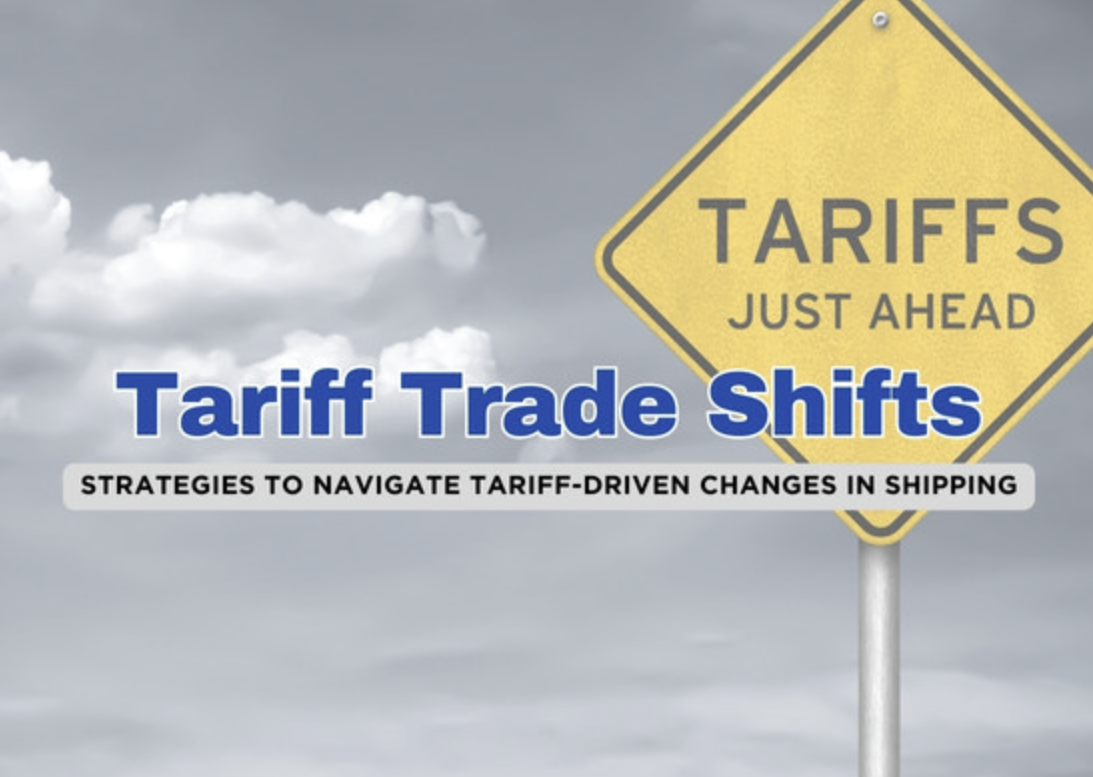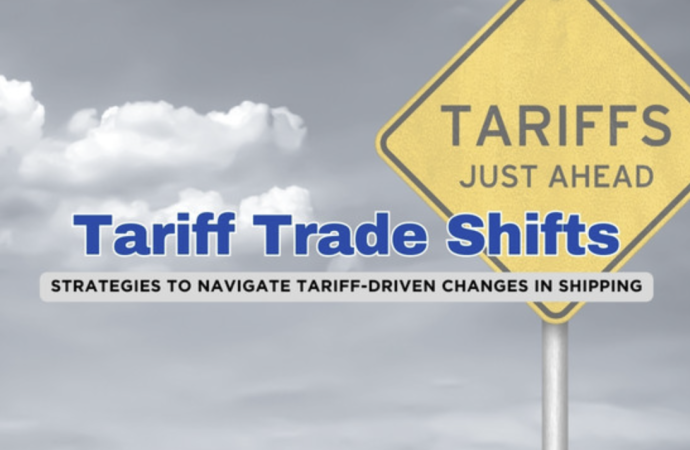Tariffs often seem like a dry subject, but they can have significant real-world consequences. While they’re essentially taxes on imported goods, their effects extend far beyond that. Tariffs can disrupt supply chains, impact national economies, and raise the cost of living. This article explains how tariffs work, why governments impose them, and the impact they

Tariffs often seem like a dry subject, but they can have significant real-world consequences. While they’re essentially taxes on imported goods, their effects extend far beyond that. Tariffs can disrupt supply chains, impact national economies, and raise the cost of living. This article explains how tariffs work, why governments impose them, and the impact they have on businesses and consumers in both the imposing and receiving countries. We’ll also dive into broader trends, data, and specific examples to show just how far-reaching these policies can be.
What Are Tariffs and How Do They Work?
A tariff is essentially a tax levied by a government on goods coming into the country. It’s usually a percentage of the cost of the imported item, though sometimes it’s a fixed-dollar amount. For example, if there’s a 15% tariff on laptop imports, importers would need to pay an extra 15% on top of the original price of the device, including shipping costs.
Historically, tariffs were a primary revenue source for many governments, though today they are often used for more strategic purposes. Modern tariffs typically arise when governments seek to protect local industries, address trade imbalances, or retaliate against another country’s trade measures.
A Brief History of Tariffs
Tariffs have played a significant role in global trade throughout history, sometimes with dramatic consequences:
- The Smoot-Hawley Tariff Act (1930): During the Great Depression, the U.S. raised tariffs on many imports, triggering retaliatory actions from other countries. This led to a significant decline in global trade and is often cited as worsening the economic conditions of the time.
- Post-World War II Era: After the war, many Western nations worked to reduce tariffs through agreements like the General Agreement on Tariffs and Trade (GATT), resulting in more open markets in Europe and North America.
- Recent Years: While free trade agreements have kept global markets relatively open, there have been spikes in trade tensions, with tariffs being imposed on goods like steel, aluminum, and agricultural products to protect domestic industries or national security.
Over the past decade, some world leaders have become more aggressive in using tariffs, sparking debates about whether they help correct unfair trade practices or simply destabilize the global economy.
Why Do Countries Impose Tariffs?
Governments usually impose tariffs for a few key reasons:
- Protecting Domestic Producers: By making imports more expensive, tariffs help local manufacturers compete with foreign goods. While this can save jobs or help struggling industries in the short term, it can also reduce the incentive for innovation over time.
- Retaliation: Tariffs can also serve as a response to another country’s trade measures. If one country raises tariffs on another’s exports, the targeted country might retaliate with tariffs of its own. This back-and-forth can escalate into a trade war, leading to higher prices and reduced trade between nations.
- National Security: Certain goods, like rare-earth metals or advanced electronics, are considered vital for a country’s defense. Tariffs on these products can ensure that domestic producers remain competitive and reduce reliance on foreign suppliers.
- Generating Revenue: While less common in large economies, tariffs can still be a significant source of income for some developing nations that lack fully developed tax systems.
The Immediate Impact: Who Pays the Tariffs?
- Higher Prices for Consumers: When a country imposes tariffs, it raises the price of imported goods. Importers often pass these higher costs on to consumers, leading to price increases for everyday items. For example, past U.S. tariffs on home appliances caused notable price hikes for both imported and domestic brands. Even goods made locally can become more expensive if their supply chains rely on foreign components that are now taxed.
- Shifts in Production and Jobs: While tariffs can temporarily protect certain industries, they can also cause problems for others. For instance, tariffs on steel might save steel mills from closing, but manufacturers who rely on steel might face higher costs, leading them to cut production or lay off workers. These effects can be hard to predict, as the impact of tariffs spreads through various sectors.
- Retaliation and Trade Wars: When one country imposes tariffs, the targeted country might retaliate, leading to a cycle of trade measures that escalates quickly. This uncertainty can cause businesses to delay investments or alter their supply chains, unsure of what tariffs will apply next. According to the World Trade Organization (WTO), ongoing tariff disputes can slow global economic growth by as much as half a percentage point per year.
Long-Term Effects on National Economies
- Impact on GDP: Tariffs can reduce the flow of goods and services between countries, slowing global trade and affecting national economies. The International Monetary Fund (IMF) has warned that prolonged tariff conflicts can significantly cut global GDP growth, potentially costing countries billions of dollars.
- Reshaping Supply Chains: To avoid tariffs, businesses may shift production to countries that aren’t affected by the tariffs, or they might seek new shipping routes. While this can keep goods flowing, it also brings costs for companies as they adjust their operations. Some countries may be left out of the loop if they can’t adapt quickly enough to these shifts.
- Disincentives for Foreign Investment: If tariffs remain high for an extended period or if trade rules are uncertain, multinational corporations may hesitate to invest in the affected countries. This uncertainty can harm nations that rely on foreign investment to grow key sectors like manufacturing or technology.
Effects on Businesses of All Sizes
- Struggles for Small and Medium Enterprises (SMEs): Smaller businesses have fewer resources to absorb higher costs. They might try to pass the cost of tariffs onto consumers, but in competitive markets, this can hurt sales. A 2020 U.S. Chamber of Commerce survey found that 40% of small businesses affected by new tariffs had to delay hiring or expansion.
- Challenges for Large Corporations: Big companies typically have more resources to shift production to other countries, but these moves aren’t without costs. For example, a car manufacturer might decide to produce more vehicles domestically to avoid tariffs on imported steel, only to find that domestic steel is more expensive, offsetting any savings from avoiding foreign tariffs.
- Retailers and Consumer-Facing Sectors: Retailers that rely on imports often have to deal with the added burden of tariffs. Some pass the costs on to consumers, while others absorb them and reduce their profit margins. Either way, it restricts their financial flexibility and can hurt sales. In cases where tariffs apply to a wide range of products, the entire retail environment can slow down.
Case Examples
- U.S.-China Trade Tensions (2018-2020): The U.S. imposed tariffs on billions of dollars’ worth of Chinese goods, citing unfair trade practices. In response, China hit U.S. agricultural exports, like soybeans, with tariffs. American farmers lost market share to countries like Brazil, while U.S. importers of Chinese goods saw higher costs, which they passed on to consumers.
- Steel and Aluminum Tariffs: Countries like the European Union and India have raised tariffs to protect domestic steelmakers. While steel producers got a boost, industries that rely on steel, like car manufacturers, faced higher costs. This led to both job preservation in steel plants and potential job losses in sectors that depend on steel.
Mitigation Strategies for Businesses
- Supply Chain Diversification: Businesses can work with multiple suppliers across different countries to mitigate the effects of tariffs.
- Local Manufacturing: Some companies decide to build production facilities closer to their main markets to avoid tariff exposure. While this requires large initial investments, it can help reduce long-term risks.
- Advocacy and Government Relations: Lobbying for tariff exemptions or negotiating more moderate tariff rates can help companies reduce their exposure. Large firms often have dedicated teams to push for favorable terms.
- Cost-Saving Measures: Firms can seek ways to improve efficiency, such as automating production lines or consolidating warehouses, to offset the extra costs from tariffs. However, not all businesses can make these adjustments easily.
Balancing Protection with Economic Stability
Supporters argue that tariffs are necessary to protect jobs and industries, while critics point to their negative impact on consumers and global supply chains. Economists often suggest that tariffs should be balanced with broader reforms, like workforce training and industrial policies, to ensure that industries remain globally competitive without relying on long-term protection.
Tariffs are a complex policy tool. While they can protect certain industries and generate government revenue, they also often lead to higher consumer prices and disrupt supply chains. A careful approach is needed, as overuse of tariffs can harm economic cooperation, lead to retaliatory actions, and slow overall growth. However, ignoring trade challenges can leave vital industries vulnerable to unfair competition. Ultimately, the success of tariffs depends on how carefully they’re implemented and how well businesses and consumers are prepared to deal with their consequences.

















Leave a Comment
Your email address will not be published. Required fields are marked with *